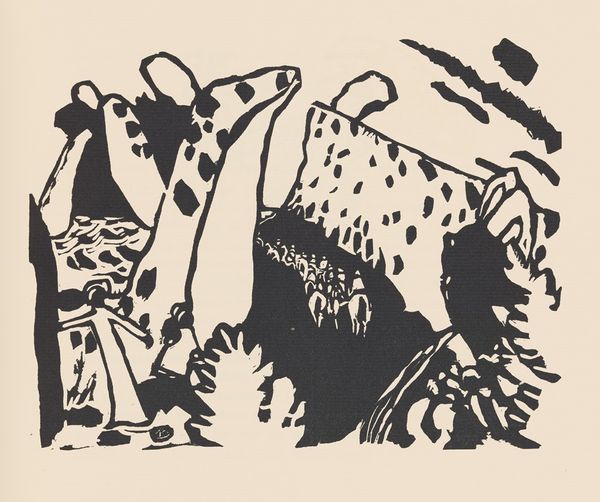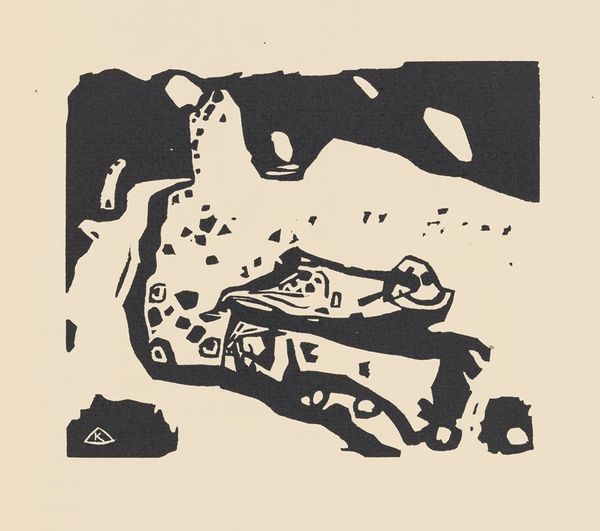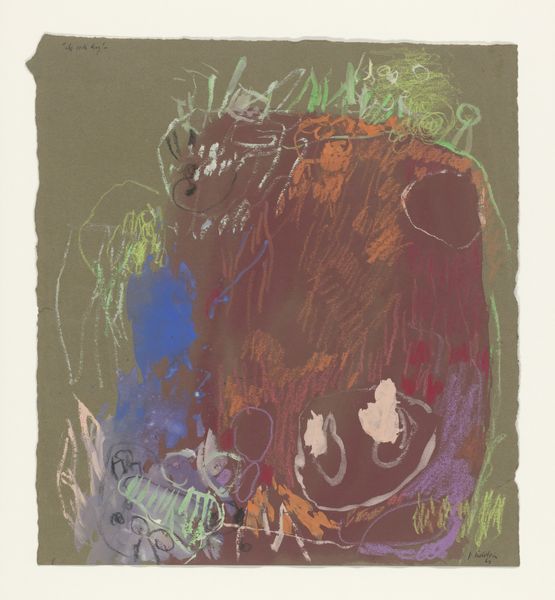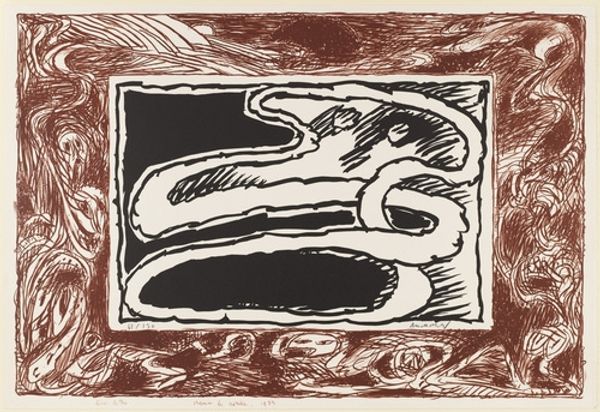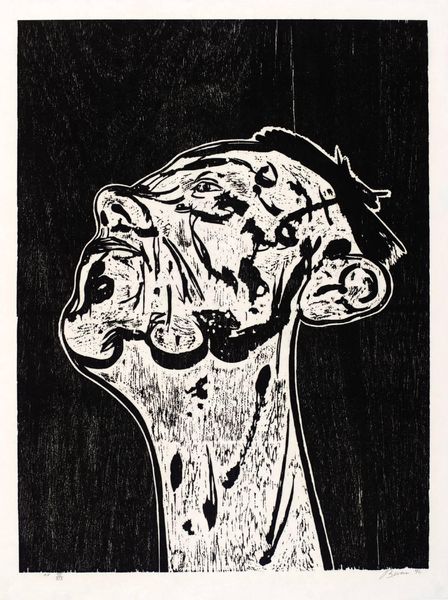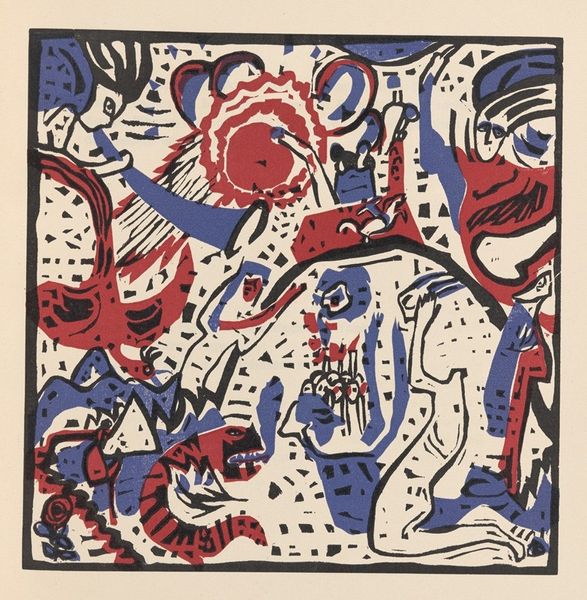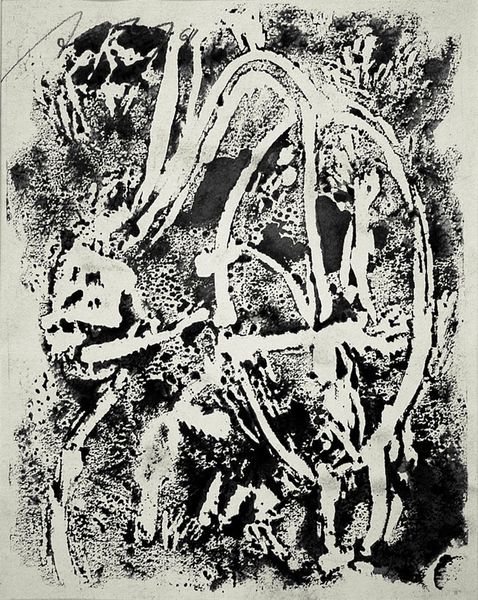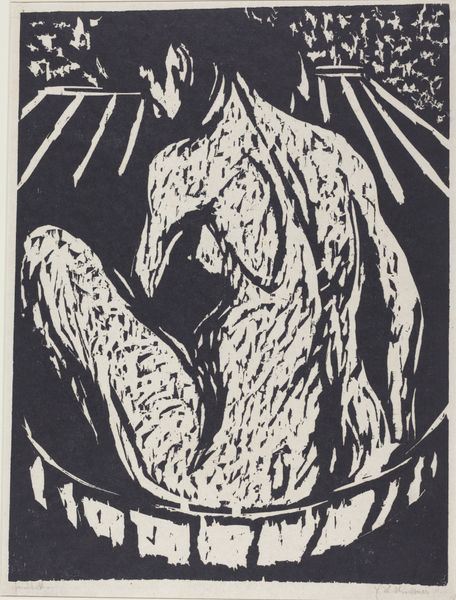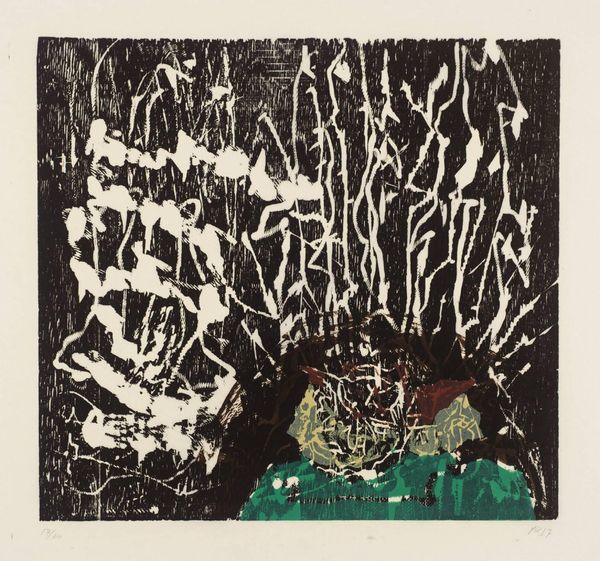
print, woodcut
# print
#
german-expressionism
#
abstract
#
geometric
#
expressionism
#
woodcut
Copyright: Public Domain: Artvee
Curator: This stark woodcut immediately grabs my attention. The dramatic contrasts and jagged forms convey a sense of unease and raw emotion. Editor: Indeed. This is "Klaenge Pl. 08," created in 1913 by Wassily Kandinsky, part of his "Sounds" series. Let's delve into its making; consider the labour involved in carving the wood matrix. Curator: Given the Expressionist context, it's fascinating to see Kandinsky embrace abstraction through this more laborious, "low-art" medium, the print, when typically we view Expressionists focusing on a more gestural painterly style, which leads us to consider access and consumption within German society at the time. Editor: Absolutely, the woodcut as a printmaking technique held cultural significance then, tied to notions of national identity, folk art and increasing urbanisation. Its accessibility allowed artists to engage with wider audiences outside the elite salon system. And looking at those crude, almost violently hewn shapes. Is there some narrative around political and economic distress? Curator: The near-absence of color heightens that tension, and its reliance on the simple duality of mark making. Think of the deliberate choices, the skill required to carve these forms—each line, each negative space contributes to this profound emotive experience, where craft and concept converge. Editor: Precisely. We can also read this as Kandinsky experimenting with his developing theories about synesthesia, connections between sound and vision. In looking at how colour is denied, we may understand the way Kandinsky tried to distil this expression in basic forms that were then readily printed. It's almost an attempt to push against class and status, where everyone may consume and share the sounds expressed, to create new solidarities that disrupt a bourgeois political hegemony. Curator: That's a stimulating point, I hadn't considered it like that. This analysis of how the art process intersects with the socio-political sphere illuminates the radical intent inherent within Kandinsky's embrace of material and distribution. Editor: Reflecting on "Klaenge Pl. 08", it reminds us to question not just what we see, but the tangible choices that inform it; where form and material echo far broader societal dialogues. Curator: Agreed, and from my perspective, in focusing on those specific production and labour elements of Expressionist work allows us to ground art within the conditions of its making and reception.
Comments
No comments
Be the first to comment and join the conversation on the ultimate creative platform.
